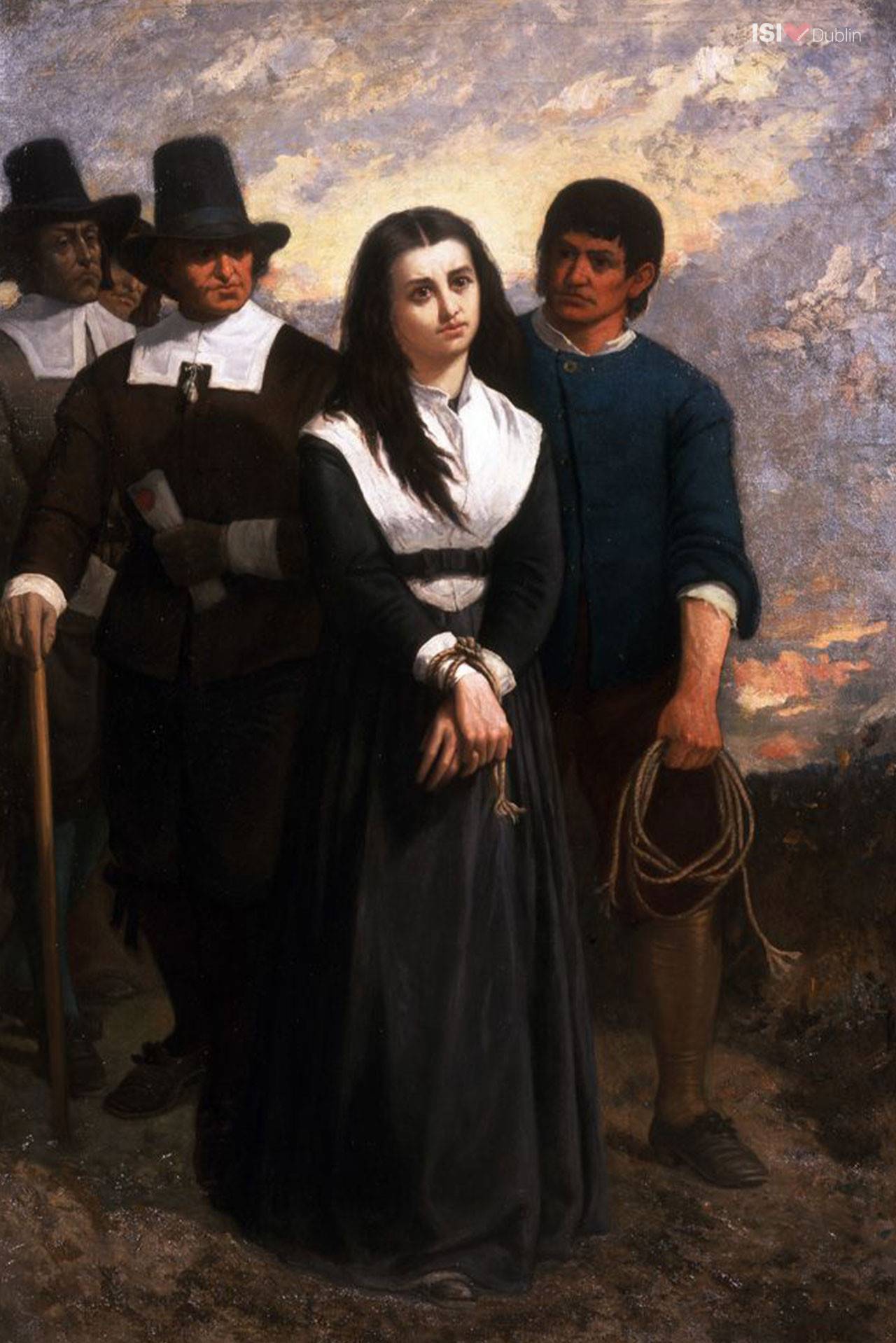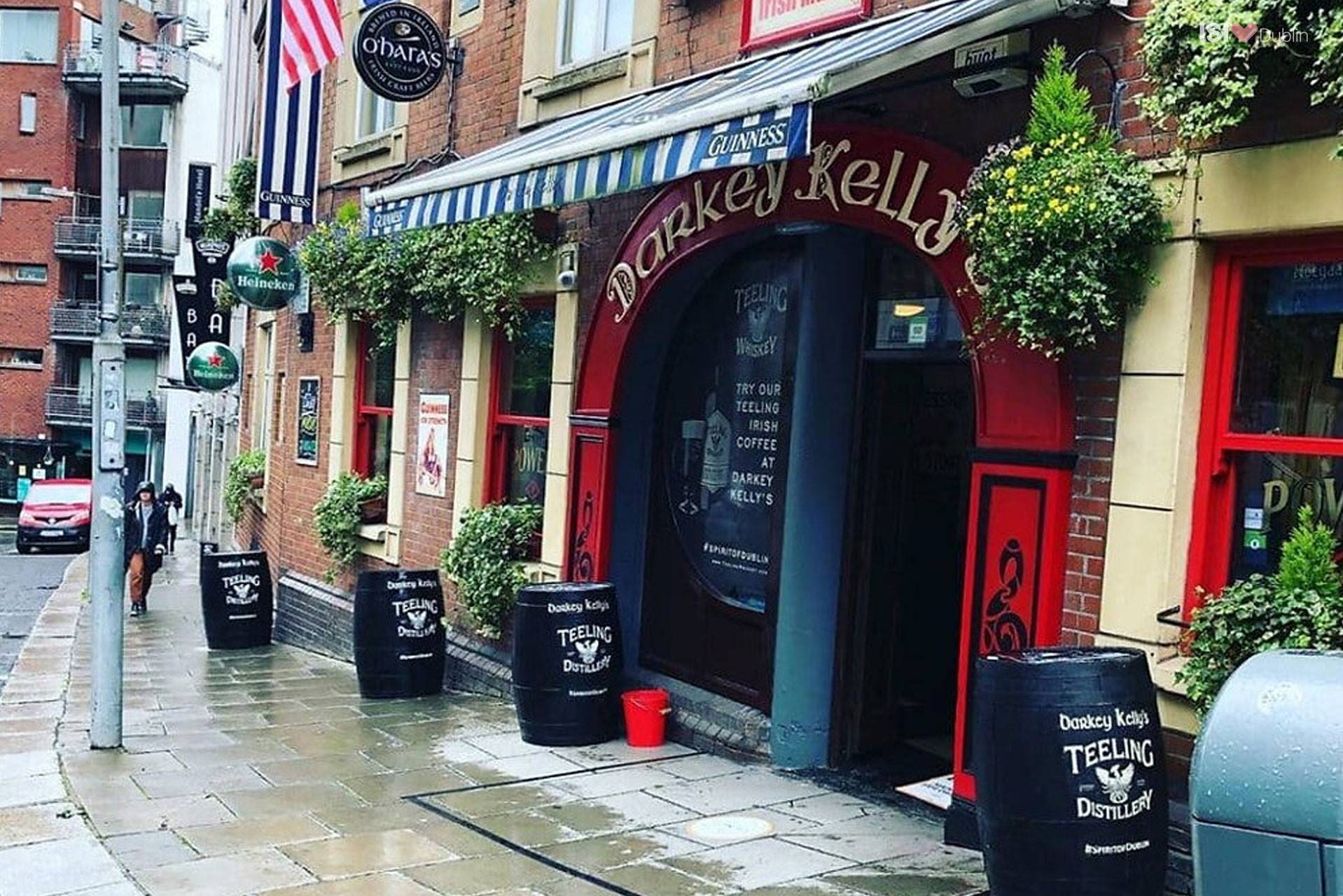Not only does history serve to influence and enlighten us, history, when introduced into the classroom, can be a very enjoyable and successful learning/teaching experience.

Dublin is, and always has been, filled with characters who have been an integral part of the very fabric of this old and beautiful city.
‘In Dublin’s fair city, where the girls are so pretty…’ the song ‘Molly Malone’ begins. Most students are familiar with the song, and the statue (!) and the high possibility that ‘sweet Molly Malone’ was not only a fishmonger but also a prostitute.
Teachers could expand on the story/song and introduce another, more colourful, character – Darkey Kelly.
Darkey Kelly was born in Ireland in about 1730. She grew up in a rich family, possibly in county Meath, and was known to be quite beautiful with long black hair and black eyes which gave her the nickname ‘Dorcas’ which is the Gaelic word for dark. Her real name is a mystery, which adds to the curiosity of this remarkable woman.

In the past, women had to marry or go into a convent. The only other option was for a woman to be a teacher!!! Many women, for different reasons and circumstances, became prostitutes. Dublin had the highest population of prostitutes in Europe during Darkey Kelly’s lifetime!
Dublin’s prostitution business was a busy trade mostly because the city had a large barracks, an active port and of course – poverty. Dublin was the second biggest city in the British Empire (London was the biggest) and there were many powerful English people living in the city.
Prostitutes had other names like harlots, streetwalkers, wontons, flaggers (because the streets had flag stones!), fallen women, women of ill repute (a bad reputation) and Molls. The place of business was on the street or in a building/house called a brothel. The brothel was run by a pimp or a madam. Darkey Kelly was a madam.
Darkey Kelly’s brothel was called The Maiden Tower. It was situated in Copper Alley, which is off Upper Exchange Street, Temple Bar. According to records, it had secret doors and corridors, mirrors and a labyrinth of rooms. There was also a dungeon (basement) for bad customers. What was a bad customer? Perhaps a violent man or one who tried to avoid paying for services?
In 1760 Darkey Kelly had a baby for a man called Simon Luttrell. Luttrell was the Sheriff of Dublin. Darkey Kelly tried to get money from him to help her to support their child – but he refused to give her any money and instead told people that she was a witch. It was always easy to accuse a woman of being a witch in those days. People became afraid of her, especially when Luttrell created a false story that Darkey Kelly had murdered the baby. When a well-known shoemaker called John Dowling disappeared, his body (and four other bodies) was found in the basement of The Maiden Tower.

Darkey Kelly was arrested and burnt at the stake in Saint Stephen’s Green on 7th January 1761. An account of another woman’s gruesome death (a woman called Mrs. Herring) was reported in a London paper some years later which can give us an idea of how Darkey Kelly may have been put to death:
‘She was placed on a stool something more than two feet high, and, a chain being placed under her arms, the rope around her neck was made fast to two spikes, which, being driven through a post against which she stood, when her devotions were ended, the stool was taken from under her, and she was soon strangled. When she had hung for about fifteen minutes, the rope was burnt, and she sunk till the chain supported her, forcing her hands up to a level with her face, and the flame being furious, she was soon consumed. The crowd was so immensely great that it was a long time before the faggots (sticks) could be placed for the execution.’
Did Darkey Kelly murder men? Was she a serial killer? Or was she set up by a dangerous and powerful character – Simon Luttrell?
Students could discuss this topic in class. Perhaps open a debate on capital punishment? Are women still being treated unfairly in society? Students should be asked to look at the language used in the story around Darkey Kelly. Words such as dungeon, secret rooms, labyrinth suggest a woman who cannot be trusted. Even her nickname ‘Darkey’ implies a sinister woman, doesn’t it?
An excursion to Copper Alley, and Baggot Street (which was once called Gallows Road as it is linked with the entrance to Saint Stephen’s Green where Darkey Kelly suffered her terrible death), and maybe finish the excursion in none other than Darkey Kelly’s pub in Temple Bar!
Great mileage can be gleaned from the story of Darkey Kelly. A re-enactment of the story could be played out in class! A discussion, debate, music (Molly Malone) and a day out at very little expense to the hard-working students in ISI.
Nergui Ankhbayar, from Mongolia said, ‘this story is so sad, and so fascinating. It makes Dublin so interesting. I can visit Temple Bar and feel a connection with the past. The city is more than buildings, more than rain and more than hard work. I love this story.’
Brazilian woman, Andressa Rodrigues Ferreira agreed. ‘Hearing stories like this about the city I live in makes my class time so interesting. I pass the gate in Saint Stephen’s Green often and now I’ll always have Darkey Kelly in my mind. Even if she did murder people, I think her death was so cruel.’
Henry Alvarado Picado from Costa Rica told me, ‘I knew Dublin was an old city. There are so many old buildings and I especially love Temple Bar because you can feel the history. Now I know about Darkey Kelly and what happened to her, and it makes me want to know more about this city. And it helps me with my English learning too.’
Excursions are great for students – and a visit to the pub later can be an added bonus! Introducing a story to whet a student’s appetite can be the making of a great day out for all.

